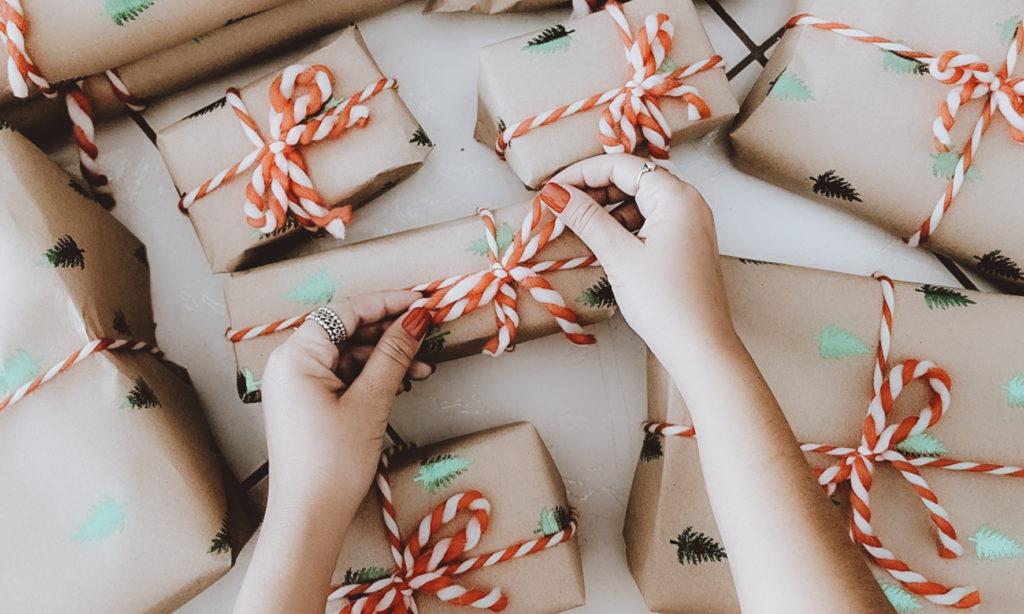Every Christmas, there is enough unrecyclable wrapping paper to wrap the equator nine times. And that’s just in the UK. The amount of waste we produce increases by a shocking 30 percent at this time of year, with 1 billion cards ending up in the bin.
It may seem a bit Grinch-like to be going on about the environmental impact of Christmas during the festive season, but this period of time is when we need to be thinking about our footprint the most. Of course, it’s not really the contents of our own rubbish bins on Christmas morning that’s destroying the planet. We now know that it is just 100 companies that are responsible for 71% of global emissions, and this is why it’s even more important this year to choose carefully where you shop.
It’s easy to be fooled by the dull-brown tones of eco-friendly wrapping paper on the high street, picking it up for a guilt-free Christmas, but when you look around the shop are all of the products sustainable? Often, as is the case with shops such as H&M, whom have produced an eco-range, presenting it as a trend, or an aesthetic, rather than the company’s movement towards a sustainable future. It’s important to consider where your money will be going and what it’ll be funding, which is why I wouldn’t recommend buying eco-friendly labelled items from fast-fashion stores. Of course, this conscious consumerism should apply all year, but it’s even more important this season because we’re shopping so much more.
If the hassle of finding eco-friendly wrapping paper sounds unnecessarily expensive and time consuming, or you want some more creative and unique ways to wrap gifts, here are some great alternatives that can be used year-round for birthday’s too!
Reusable fabric wrap

These wraps are super easy to use, and mean no tape or scissors are necessary. In Japan they’re called furoshiki and have been used to wrap presents for centuries. They are becoming more and more popular now in the UK so there’s a wide range of patterns and styles to choose from. Rather than throwing these away every year, like with wrapping paper, these fabric wraps can last for ages, being passed between family members and friends in Christmases to come. Or if you are with the gift recipient and cannot bear to part with your beautiful fabric wrap, subtly reclaim your furoshiki.
Scrap wallpaper

You know those random sheets of spare wallpaper you have in the garage which are just never going to be used? Well these make great wrapping paper substitutes as they’re often covered in pretty patterns and colours. The good thing about using materials like these is that they are much sturdier than the usual cheap rolls of paper and they are unlikely to be used otherwise. But bear in mind, if these are covered in glitter or are shiny then they cannot be recycled.
Newspaper

If you have old newspapers lying around the house these can make for an excellent wrapping substitute. Likewise, if you have any old, unused maps they can also be a great way to personalise gifts. Not only do they have a cool, vintage aesthetic, but it’s really easy to fold, cut and tape which many glittery, shiny wrapping papers are not.
TIP – THE SCRUNCH TEST
To recycle or not? It’s a tricky one, and mistakes are often made. In general, a good rule is that if you can scrunch the wrapping paper up into a small ball easily, then it can be recycled! Of course, it’s frowned upon to go around shops scrunching up their wrapping paper, and that’s why this test is just for the piles of rubbish on Christmas morning. As for when you’re shopping, if you check the packaging most of them do say so. If the packaging your checking is a cover of single-use plastic there’s a good chance that it’s not recyclable!
Overall, the best thing you can do this time of year is buying from small businesses. Not only do they do less harm to our planet, but after the financial damage of the pandemic this year, they could use the support. A great way to do this is buying from sites like Etsy, the home of many small businesses, especially as they offset 100% of carbon emissions from delivery. Have an eco-friendly Christmas, and a sustainable New Year!
Header image credit: Printful

